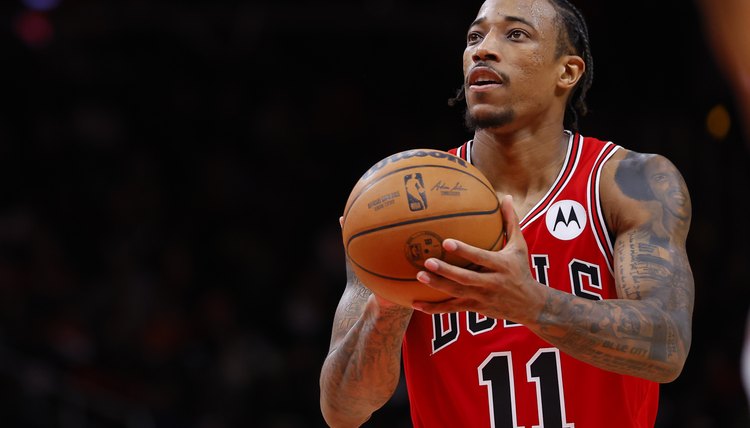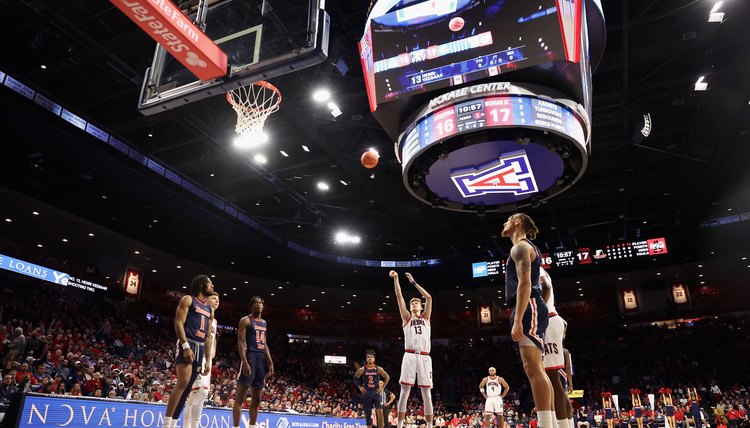What Is a 1 and 1 in Basketball?

Fouls in basketball often send the fouled player to the free throw line to shoot free throws, but how many free throws they shoot depends on several different factors.
- If an offensive player is fouled in the act of shooting and misses the shot, they are rewarded with two free throws if they are fouled inside of the three-point line, and awarded three free throws if they are fouled on a three-point shot
- If an offensive player is fouled in the act of shooting and makes the shot, they are rewarded with just one free throw, regardless of where they shoot it from on the basketball court
- This means that a player can make a layup, dunk or three-point field goal and still be rewarded with just one free throw shot attempt.
- If a player makes a two-point basket and is fouled, he goes to the foul line to complete a “three-point play.” If a player makes a three-point shot and is fouled, he goes to the line to complete a “four-point play.”
- The number of free throws a player is awarded for more severe fouls like technical fouls and flagrant fouls depends on the level of play
Non-shooting players that have possession of the ball and are fouled are awarded one free throw once the opponent's team has committed a set number of team fouls. For example, if a defensive player fouls an opposing player while he is dribbling, the dribbler still may end up shooting free throws if the defensive player’s team has already committed a certain number of fouls that the level of play calls for.
If he makes the first free throw, he gets another -- a "1-and-1." The team who is shooting free throws is said to be in “the bonus,” while the team who is over the foul limit is said to be in the “foul penalty.”
International basketball awards 1-and-1 free throws based on the number of fouls per quarter, while college and high school 1-and-1s are based on the number of fouls in a half.
International Basketball
According to FIBA basketball rules, when the referee calls a non-shooting foul on the defensive team and that team has committed five fouls in the quarter, the player who was fouled is awarded one free throw. If he makes the shot, he gets another free throw. If he misses, the ball goes to the team that rebounds the basketball.
College Basketball
NCAA basketball games consist of two 20-minute halves. Once a team has committed seven fouls in a half, the opposing team is awarded a 1-and-1 free-throw situation. After the 10th foul by the opponent in a half, the team is given two free throws, commonly referred to as “double bonus.”

Professional Basketball
In professional basketball, teams go into a bonus situation once an opponent's team commits five fouls in a quarter. However, there is no 1-and-1 rule in the NBA. After the fifth foul, fouled players get two free throws. If the player misses the first free throw, he still gets the second one.
High School Basketball
In high school basketball, teams enter the bonus situation after the opponent's team has committed its seventh foul in a half. This is the same as college basketball, but high school basketball teams play four 8-minute quarters, not two 20-minute halves.
Once a high school team has committed seven personal fouls in a half, the opponent shoots one free throw and gets the bonus if the first shot is good. Once 10 fouls are committed, the opponent gets two free throws.
References
Writer Bio
Steve Silverman is an award-winning writer, covering sports since 1980. Silverman authored The Minnesota Vikings: The Good, The Bad and The Ugly and Who's Better, Who's Best in Football -- The Top 60 Players of All-Time, among others, and placed in the Pro Football Writers of America awards three times. Silverman holds a Master of Science in journalism from the Medill School of Journalism.
